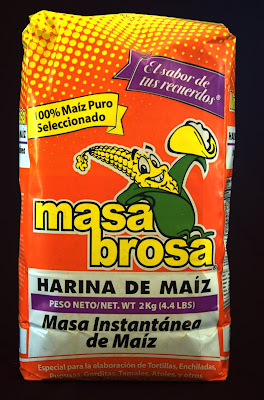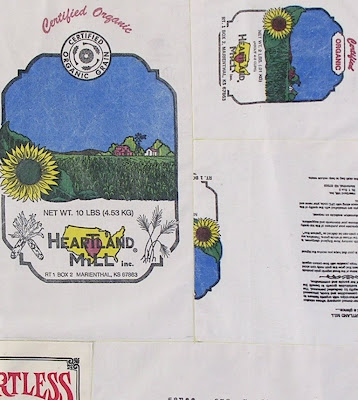 The bake was successful.
The bake was successful.Saveur is a magazine that I am fond of getting delivered to my door. If you are not familiar with this publication, let me just say it is a travel log with sumptuous recipes. The would be chef is enticed to prepare snacks and meals from around the globe. To its credit it is user friendly. Most ingredients are easy to find, although sometimes planning the meal dujour may have to be done weeks in advance. In the most recent issue, December of 2008, I was excited to see a recipe for Pandolce Alto, a Christmas bread from Liguria Italy. A story of immigration and a lost but not forgotten bread. Let me explain; Laura Schenone, the author of this article looks to find this christmas feast bread that had been baked by her great-grandmother and her grandmother. The recipe had been lost in the passing of generations and she heads off to Italy to find the bread recipe. In short she knows an Italian baker and learns from him. I found her story enticing, although the recipe she presented seemed to ignore some bread baking basics (that I will go over below). Laura Schenone’s strength is in observation, fortunately her text dropped enough clues to make this ancient bread come alive in my kitchen.

 This is the photo and recipe from Saveur Magazine.
This is the photo and recipe from Saveur Magazine.Pandolche Alto; A step by step discussion concerning the Saveur recipe.
Step 1:
The starter: The sponge is a great way to get your yeast up and running. If you’re letting it sit over night you need not heat the water, ambient temperature of a bout 74 f degrees is good. The next morning when the sponge is puffed up and domed it is at its peak, use it now. Do not keep this for three days without feeding it, your bread will be a sluggish lump. Refer to a good baking book on how to keep your yeast happy. Better yet learn how to make your own sourdough (levain) starter.
The question of salt. Where is the salt in this recipe, I don’t know, but I think it is good for the balance of flavour, especially with so much butter. Salt also provides for a good deal of (freshness) keeping power. In defense of Laura, historically speaking, the Italian region of Tuscany has a tradition of salt-less breads. This came about as a response to a heavy salt tax levied by neighbouring provinces during the Middle Ages. Her recipe comes from the near by region of Liguria, this could be historically correct.
Steps 2 and 3:
Water:Without the use of baker’s percentages, the amount of water to use is solely based on your tacit knowledge and previous experience as a baker. Two items of mention; Number one; add all of your water before adding the butter, build strength in the dough first. Your gluten structure must be in place before you coat it with oil. This part of the recipe procedure is correct. Number two: Not only do you want to soak the fennel but also soak the raisins. A twenty minute soak tenderises and helps prevent any exposed raisins from burning on the outside of your bread. Boil the water needed and pour over the fennel seeds and raisins, let sit covered for 20 minutes. Strain off cooled water and use in dough.
Step 4 the dough:
Bulk Ferment, do not divide the dough yet. This is your grand opportunity to get more flavour into the bread. Bulk fermenting helps build acids in your dough, adding complex flavors and strength to your dough. At this point if you are in no hurry, let the dough sit in a cool place for 1 - 2 hours. This dough will not double in size, keep an eye on it and keep it covered. If you plan to ferment overnight skip the bulk fermentation and divide your dough now, shape and ferment at about 50–55 f degrees for 8 to 12 hours, keeping dough moist and covered with plastic.
Divide and shape; Form into tight balls and place where it will stay warm 78f–80f degrees. Watch your dough closely now, always covered as to keep the dough from forming a skin. Give your bread time, this phase is known as final fermentation. You must judge when your bread is ready for the oven. Touch your bread, feel for firm or soft, judge the amount of rise visually, but by all means do not over proof. The time depends on the vitality of the yeast and temperature of your kitchen. Will this dough ever double in size? My attempts did not reach such dimensions, I wish you luck.
Scoring the bread; Scoring is essential for enabling the loaf to expand when it meets with the oven’s heat. A professional bakers lame makes it easy, but a one sided safety razor blade or serrated knife will also work. The directions here tell us to score making three cuts ending up with a triangle configuration. You could also make an x and have a beautiful loaf with nice oven spring, but that is not the point. The author does not state it, but I find it logical that a Christmas loaf be scored symbolically, this is a bread of tradition and an important reminder of ones faith. My guess is we are representing the Holy Trinity here. I an not staunch in my religious views but I find this omission a great loss for the reader. A brief search on the net produced a plethora of information regarding the triangle in the Christian faith.
Step 5:Bake;
The 350f oven temperature is correct. It is essential to turn the pan after 20 minutes and cover with a piece of foil loosely tenting the bread. Use the center rack so the bottom of the bread does not get overly brown. you can double up sheet pans a well. After 50 minutes if you are not sure if the bread is baked through, poke it with a quick read thermometer, 190f and your loaf is finished. A final note you may only want to bake two loaves at a time, four loaves on a half sheets pans will not give an even bake.
 The Pandolce Christmas Bread has a triangle scored on the top before it is baked.
The Pandolce Christmas Bread has a triangle scored on the top before it is baked.Pan Dolche Alto: A discussion of the Italian baker’s process based on clues in the text.Laura Schenone’s craft as a writer -observer is well honed, although I would have like to have had her notebook when reworking this recipe. Fortunately for us her editor left a couple of important clues regarding the bread and the bakers process. First a tip of the hat to the baker Adriano Alvigini, sixth generation baker with a passion for the “old recipes”.
clue #1 the levain; “Harriet has been feeding the leaven it looks like a piece of springy dough.....” this is then a stiff preferment, essential for this bread. Harriet has been feeding it! The preferment needs to be happy and active.
Clue #2 the water; “I watch him slowly pour a stream of sugared water into the center of a mound of flour....” he pre dissolves the sugar for easy integration and use by the yeast. The sharp edges of the sugar crystals will tear at the gluten strands until dissolved. Thus dissolving the sugar first will shave off a few minutes when kneading the dough. I prefer to mix my sugar in dry,this gives me more control over the amount of water I add. Different flours vary in the amount of water absorption.
Clue #3 building dough strength; “continues to work the dough for 40 biceps-pumping minutes.”... He mixes the flour and sugar water then incorporates the stiff levain. Next the butter is worked in, and lastly the fruit and nuts. This is a heavy dough and the gluten needs to be strong. The acids in the stiff levain also add strength.
Clue # 4 overnight fermentation; “...forms eight perfectly round pandolce loaves. He leaves them on the table to let them rest overnight.” From this we know the dough is not slack and the work table area is cool, this is around Christmas time in northern Italy.
Clue #5 baking; “An hour later they emerge from, the oven “We bite through the crunchy exterior, the delicate crumb...” A long bake at a low temperature. The crunchy exterior could mean he used a high gluten flour, or that the long fermentation developed conditions favourable to good crust development. This last part about a delicate crumb I don’t believe, sour dough is normally chewy not cake like.
 Pandolce ready to go into the oven.
Pandolce ready to go into the oven.The revised recipe; Pandolce Alto
Makes 8 loaves about 525g each
Overall formula
bread flour 100 % 1.536 g
water 60 % .921 g
salt 2 % .030 g
unsalted butter 23 % .356 g
sugar 13 % .200 g
dark raisins 47 % .720 g
candied orange
peel 20 % .308 g
pine nuts 6 % .096 g also called pignoli
fennel seed 2 % .036 g wild Italian is the best
total 273 % 4.203 g
Stiff levain, 35 % pre-fermented flour
bread flour 100 % .537 g
water 60 % .322 6
total levain .859 g
Final dough
Bread flour .999 g
water .599 g
salt .030 g
butter .356 g
sugar .200 g
raisins .720 g
peel .308 g
pine nuts .096 g
fennel .036 g
stiff levain from above .859 g
Process; Mixing by hand.
1. Make final build to stiff levain approximately 12 hours before baking session,ferment at about 70f degrees
2. Remove butter from refrigeration and scale to weight.
3. Boil part of the final dough water and pour over fennel and raisins using separate bowls.cover with plastic wrap and soak for 20 minutes or until water has cooled off.
4 Lightly toast pine nuts in a dry fry pan, allow to cool.
5. Drain raisins, reserving liquid.
6. In a restaurant size prep bowl mix flour, salt, sugar
7. Add in stiff levain and mix by hand until you have a ragged mass, this is done by rubbing the levain with the dry ingredients between your palm and fingers.
8. Add in the reserved raisin liquid, then slowly add in water, dough will be on the dry side and very stiff at this point. Try to hold back a small amount of the water. Knead this dough for fifteen minutes it will become more supple as you work it. This is when your dough gets the most of its strength, so keep at it!
9. Add in the butter half at a time, your dough will not want to accept all this fat at first and will act a bit crazy, but with in fifteen minutes you will have all the butter in and a beautiful dough.
10. Mix fennel, pine nuts,and orange peel in with the raisins, toss a few times and add to the dough. Another 10 minutes of kneading in the goodies and your dough is ready to divide.
11. Dust the dough with a bit of flour and scale out approximately 525 g pieces of dough.
12. Round up the dough into nice tight balls and ferment on bakers linen or use parchment on sheet pans. Either way slip trays into clean plastic trash bags and place into the fridge.
Ferment between 50 f - 55f degrees for a total of 8 to 10 hours. If you do not have a spare fridge allow dough to set out for about two hours or until you have noticeable loaf expansion . Move bread into your refrigerator that is set at about 40f degrees for a maximum of 12 hours.
13. Arrange oven racks to the bottom third of your oven, set in baking stone and preheat the oven to 350f degrees. Do this 45minutes ahead of bake. Have a sprayer filled with water ready or other means of introducing steam into the oven. Remove two loaves from the refrigerator 20 minutes prior to bake. Do not do this if loaves seem fully proofed and are on the verge of collapse.
14. Score top of bread with three slices making the shape of an equilateral triangle.
15. Slide bread on to your baking stone or set in sheet pan with bread on parchment. Give the oven wall a blast of water from your sprayer close door. After 5 minutes repeat with another blast of water. Bake for a total time of 50 minutes. After 20 minutes, give bread a 180 degree turn and tent loosely with foil. If your not sure if your bread is finished insert a probe thermometer into center of bread and look for a finished temperature of 190f degrees. My loaves averaged an internal temperature of 204f to 208f degrees and were fully baked. If using a sheet pan, inspect the bottom of your first two loaves. If you deem them to be on the dark side move the oven rack to center and double up the sheet pans.
16. Cool on rack before slicing. Now bring grandma some tea and a nicely buttered slice of Pandolce Alto!
 Final thoughts;
Final thoughts;It should be noted that I based my percentages upon the magazine recipe,in part because my research did not yield another Pandolche recipe. I have nagging doubts that the high percentage of butter is correct. Perhaps less would lighten the crumb? I baked this bread four different times before being satisfied with the results. My neighbors gladly tasted each bake and each time responded with kudos. The wild fennel is worth hunting down, the seeds are much smaller and the flavor more pungent. Yes I did use the standard fennel purchased in bulk from a health food center and it paled in comparison.Lastly if you have a recipe for authentic Pandolche Alto please forward it to the “Second Helping House”, thank you.





















